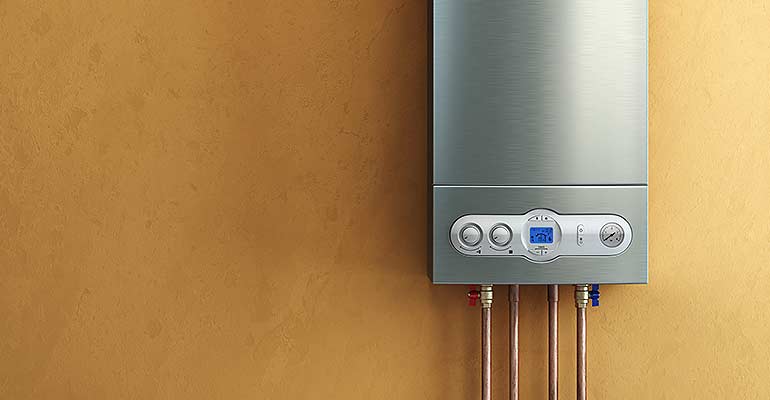Just how do you actually feel when it comes to How to Maintain Your Water Heater & Prolong its Life?

Hot water is crucial for daily comfort, whether it's for a rejuvenating shower or washing meals. To guarantee your warm water system runs successfully and lasts much longer, regular maintenance is crucial. This article offers useful ideas and understandings on just how to maintain your home's hot water system to avoid interruptions and pricey fixings.
Intro
Maintaining your home's hot water system might seem difficult, yet with a couple of simple steps, you can ensure it operates efficiently for years to come. This guide covers whatever from comprehending your hot water system to DIY maintenance suggestions and knowing when to contact specialist assistance.
Value of Preserving Your Warm Water System
Routine maintenance not only extends the life expectancy of your hot water system however also ensures it operates successfully. Disregarding upkeep can bring about lowered performance, greater energy bills, and even early failing of the system.
Indicators Your Warm Water System Requirements Maintenance
Knowing when your hot water system requires interest can avoid significant concerns. Keep an eye out for indications such as irregular water temperature, strange noises from the heating system, or rusty water.
Purging the Hot Water Heater
Flushing your hot water heater removes debris buildup, enhancing effectiveness and lengthening its life.
Checking and Changing Anode Rods
Anode rods stop deterioration inside the tank. Evaluating and changing them when broken is important.
Complicated Issues Calling For Specialist Assistance
Examples consist of major leaks, electrical troubles, or if your water heater is continually underperforming.
Regular Professional Upkeep Conveniences
Specialist upkeep can include thorough examinations, tune-ups, and making sure compliance with safety and security standards.
Checking and Adjusting Temperature Level Settings
Readjusting the temperature setups ensures ideal efficiency and security.
Do It Yourself Tips for Maintenance
You can execute several upkeep tasks on your own to maintain your hot water system in leading condition.
Looking for Leakages
On a regular basis inspect pipelines and connections for leaks, as these can bring about water damage and greater costs.
Comprehending Your Warm Water System
Before diving into upkeep jobs, it's valuable to recognize the standard parts of your hot water system. Usually, this consists of the hot water heater itself, pipes, anode rods, and temperature level controls.
Monthly Maintenance Tasks
Routine month-to-month checks can help catch minor concerns prior to they escalate.
Evaluating Stress Alleviation Valves
Testing the pressure relief valve guarantees it operates appropriately and avoids extreme stress build-up.
Insulating Pipelines
Insulating hot water pipes minimizes warmth loss and can conserve energy.
When to Call a Professional
While DIY maintenance is helpful, some concerns call for professional knowledge.
Final thought
Routine upkeep of your home's warm water system is crucial for efficiency, longevity, and cost savings. By complying with these suggestions and knowing when to seek specialist help, you can make certain a reputable supply of hot water without unexpected disruptions.
Water Heater Maintenance Tips
Test the TPR Valve
Shut off the power and the cold-water supply valve. Place a bucket under the pipe connected to the temperature-pressure-release (TPR) valve on the top or side of the tank. (This valve opens if the tank pressure gets too high.) Lift the valve’s tab to let some water out, then let go. If water keeps flowing, drain the tank partway, unscrew the old valve with a pipe wrench, and install a new one. Check the Anode Rod
Put a hose to the tank’s drain cock and let out a few gallons of water. Now fit a 1 1/16-inch socket onto the rod’s hex head on top of the heater (or under its top plate) and unscrew the rod. If it’s less than ½ inch thick or coated with calcium, buy a new one, wrap its threads with Teflon tape, put it back in the tank, and tighten securely. Use this segmented rod if headroom above the tank is limited. Drain the Tank and Wash Out Sediment
Drain the remaining water in the tank into the bucket, then stir up the sediment on the tank’s bottom by briefly opening the cold-water supply valve. Drain and repeat until clean water comes out of the hose. Close the drain cock, refill the tank, and turn its power back on. Adjust the Temperature
Find the temperature dial on the side of the tank and unscrew its cover. Adjust the dial to 120 degrees using a flathead screwdriver. For every 10 degrees the temperature is lowered, you can expect to save up to 5 percent in energy costs. Turn the water heater off or the thermostat down to its lowest setting if you plan to be away from home for more than three days. Insulate the Pipes
Buy some self-sticking 3/8-inch-thick foam pipe insulation that matches the pipes’ diameter. Slide the foam over the hot-and cold-water pipes as far as you can reach. Insulating the cold-water pipe prevents condensation in summer. Peel the tape and squeeze the insulation closed. If the pipe is 6 inches or less from the flue, cover it with 1-inch-thick unfaced fiberglass pipe wrap. https://www.thisoldhouse.com/plumbing/21016402/how-to-maintain-a-water-heater

We had been shown that write-up on How to Maintain Your Water Heater & Prolong its Life through a good friend on another blog. Sharing is good. Helping others is fun. Thanks a lot for your time spent reading it.
Book Maintenance